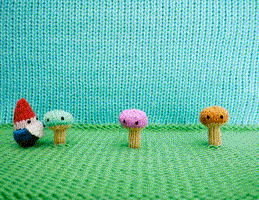Heat treating with sand for lower distortion
Heat treating… yeah that's right! We’re here to do some more testing! This will be a sort of guide and presentation of our explorations into using sand as an aid in the heat-treating process. Read on! You might learn something!!! ;)
Protopasta HTPLA is PLA that can be heat treated for a higher-temperature resistance than standard PLA. This changes the material structure from amorphous to crystalline. While amorphous structures change drastically near their glass transition temperature, crystalline structures maintain useful properties above said point and towards their melting point. Thus, heat treating greatly increases the useful temperature range of a 3D-printed part. For a more in-depth look into the heat treating process and science check out THIS article.
These properties do come with some trade-offs. There is a small amount of distortion and some mechanical shrinkage/growth. The growth and shrinkage are pretty constant between prints, but, historically, distortion has been less predictable and more difficult to compensate for. Therefore, any reduction we can make to the magnitude of distortion is helpful assuming this reduction in magnitude is also reliable.
We tested several variables that did not influence distortion and one that did which we will now share with you. We found that submersing printed parts in pre-heated sand and adding weight from above significantly reduced distortion. The following graphs are the results of our testing with various orientations of the same bar. We quantified distortion was found by holding one side of a rod specimen against a flat surface and recording the opposite end’s distance from that same surface.

These bars are printed out of translucent ice HTPLA as it is known to warp more than our other HTPLA composites. Printing with something such as carbon or matte fiber HTPLA should yield even less distortion. For the test, 100 mm x 10 mm x 5 mm bars were printed and then heat treated with the below parameters in three different orientations. We tested 5 bars for each condition and reported the average on our bar graphs.
- PrusaSlicer
- 0.2mm layer height
- 15% rectilinear infill
- 2 perimeters
- 5 top layers, 4 bottom layers
- Heat treating (Sand):
- 10 mins at 120℃ in a standard oven
- Quickrete playsand
- Pyrex containers
- Heat treating (Oven):
- 10 mins at 120℃ in a standard oven
- Balsa-wood block (Insulative surface to place the bars on)

Materials:
- 3D printed part
- 2x Similar oven safe containers
- 1x Bag of play sand (Salt could work as well but your results may vary)
- 1x Thermometer
- 1x Pair of oven mitts
- 1x Standard oven

Fig. (1, 2, 3,)
(4, 5, 6,)
(7, 8, 9)
Procedure:
- Fill one container with play sand and place it in the oven (fig. 1).
- Place the other container in the over to preheat as well.
- Preheat the oven to 120℃.
- Wait until the sand reaches the set temperature.
- Carefully remove the containers.
- Empty a majority of the sand into the empty container leaving about a 10 cm layer on the bottom (fig. 2).
- Place your part onto the thin layer (Fig.3).
- Slowly cover your part with sand (Fig.4).
- Place both containers into the oven with the empty one on top (fig. 6).
- Wait 10 minutes or more for the parts to change to a crystalline state (larger parts my take longer).
- Carefully remove the containers from the oven.
- Slowly empty the sand container into the empty container to reveal your part (fig. 7).
- Carefully remove it from the sand to avoid warping (Fig.8).
- Clean off your part using a razor or brush to remove sand.
- Admire your work!
Our technique simply used two containers of preheated sand with some pressure on top to immobilize it. While this worked very well for us, this is only one method of heat treating. Please feel free to make your own experience and tests. Some possibilities for further exploration include using damp sand for higher conductivity, salt for easier cleanup, and/or vibration to better compact the medium. Whatever you come up with, be sure to share it with us @proto_pasta on Instagram and @Proto_pasta on twitter. Good luck and enjoy!


